Table of contents
- Scene: Review: 26 years of Buell – Erik Buell remembers “I wanted to build Harleys with handling”
- What is Buell doing now?
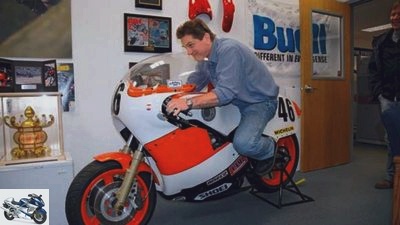
Cathcart
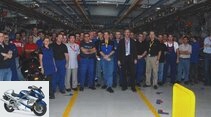
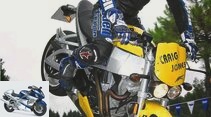
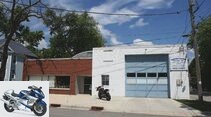

55 pictures
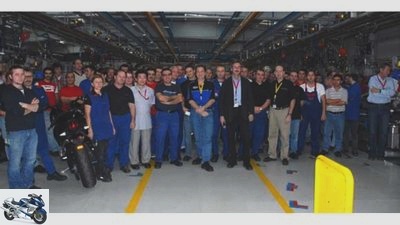
Buell
1/55
Erik Buell and the Rotax team at the Rotax plant.
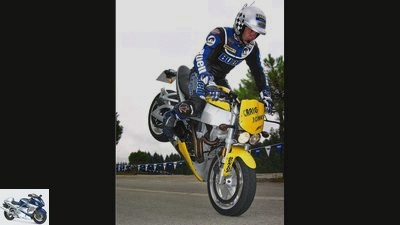
Buell
2/55
2003 – Stuntman Craig Jones on an XB9S.

Buell
3/55
The Buell factory in Mukwanago.
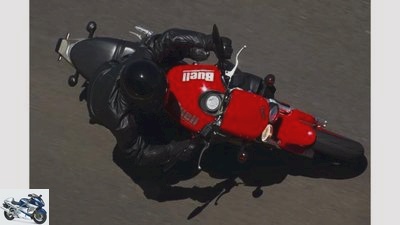
Buell
4/55
The full-length Lightning Long XB12Ss.
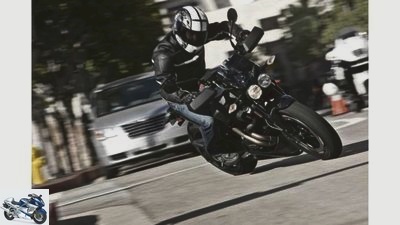
Buell
5/55
Lightning CityX XB12SX is slated to fill stores in 2010. But then everything turns out differently than planned: …
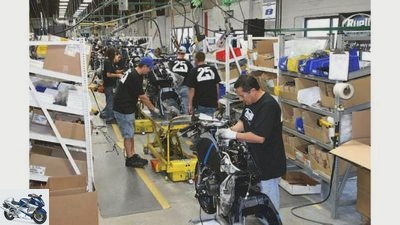
Buell
6/55
In 2008 the East Troy factory was still busy producing.
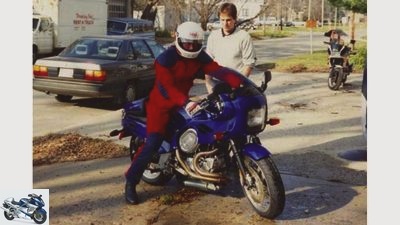
Buell
7/55
1989 – the first Buell without full fairing. The shock absorber and rear silencer are located under the engine in the RS1200 Westwind.

Buell
8/55
At the end of 2009, Buell presented the new Lightning CityX XB12SX for 2010, which is based on the short XB chassis.
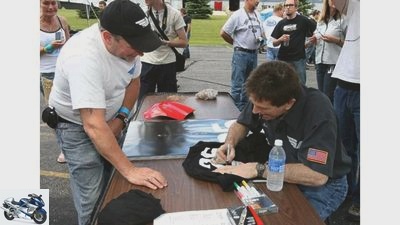
Buell
9/55
Of course, there is also an autograph session from bike builder Erik Buell.
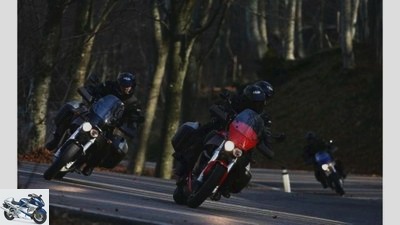
Buell
10/55
Anniversary bike in touring outfit: Ulysses XB12XT.
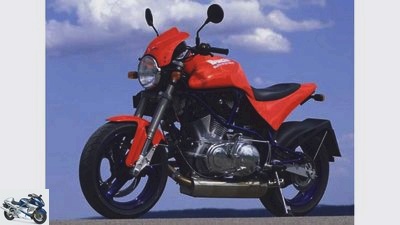
Buell
11/55
In 1999 the new Thunderstorm engine with Buell Dynamic Digital Fuel Injection (DDFI) with 90 PS is installed not only in the sports tourer S3 Thunderbolt, but also in the new X1 Lightning (picture).
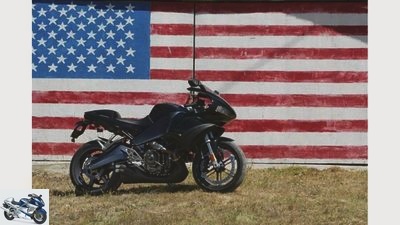
Buell
12/55
… for a completely new model family of sporty US bikes.
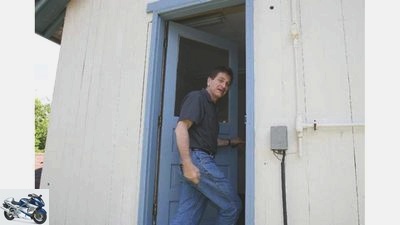
Buell
13/55
“So I decided to build my own bike in the garage next to my house. In 1983 it was finished.”
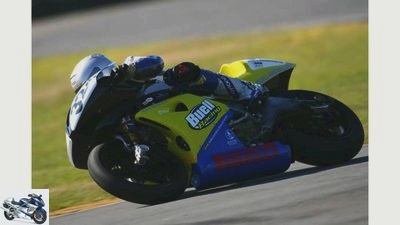
Buell
14/55
Rico-Penzkofer on XBRR in the Daytona 200 Race in 2006.

Buell
15/55
The 1125R is not only impressive in the hall, but also outdoors.
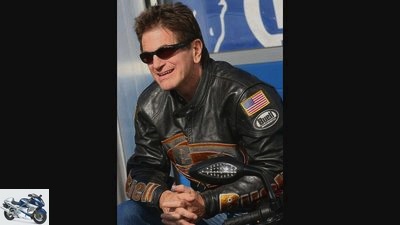
Buell
16/55
2008 – Erik visits Berlin.
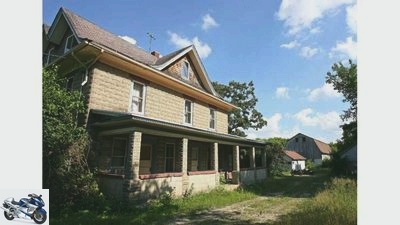
Buell
17/55
The beginnings of the Buell Motor Company, this is where it all began. The old workshops still exist today.

Buell
18/55
Erik Buell’s racing fever began in the 1970s. Here he rides a Yamaha TZ 750. The Sparton – and thus the RW – was based on it.
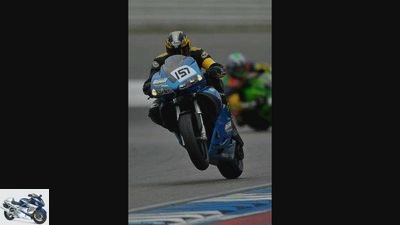
Buell
19/55
2009 – Julius Ilmberger at the 500 km race in Hockenheim.
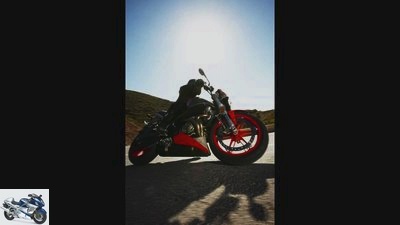
Buell
20/55
In 2006 the Lightning Long XB 12Ss comes onto the market, which is particularly suitable for tall street fighter fans and trips for two.
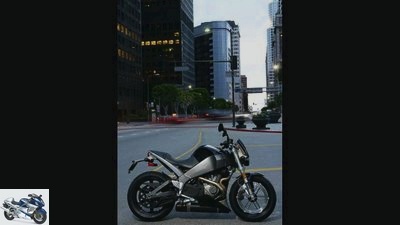
Buell
21/55
With the new Lightning Low XB12Scg, a machine is offered in 2007 that is specifically aimed at smaller, grown-up Streefighter fans.

Buell
22/55
In 2005 the Streetfighter Lightning CityX XB9SX hits the asphalt of the urban jungle, as well as the winding country roads.
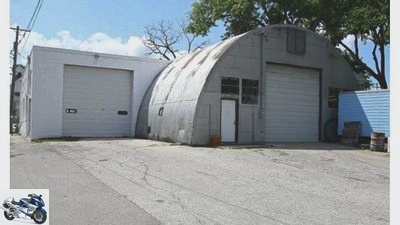
Buell
23/55
The yard of the production facility.
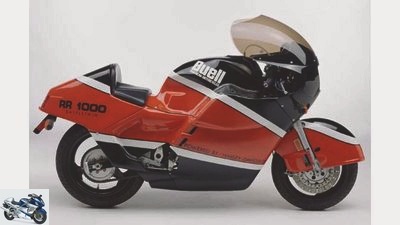
Buell
24/55
Erik cannot be stopped and within 3 months develops a ready-to-drive prototype of a sporty street motorcycle with a Harley-Davidson engine, new frame and full aerodynamic fairing: the RR 1000 Battletwin.
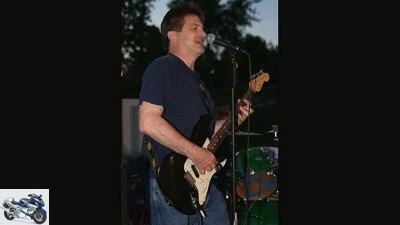
Buell
25/55
Erik Buell not only lets engines rock, but also likes to take the stage.
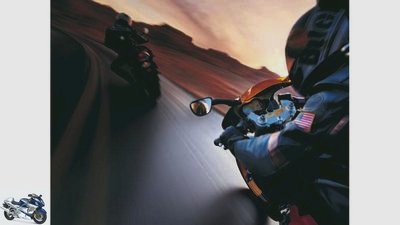
Buell
26/55
In 2004 Buell presented the Firebolt XB12R sports fighter.
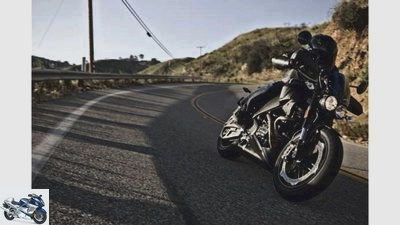
Buell
27/55
… October 15, 2009 Harley-Davidson, Inc. announced that it has ceased production of Buell branded motorcycles. But now we know that an Eric doesn’t let himself get down so quickly.

Buell
28/55
2008 – the 1125R lays a new foundation stone …
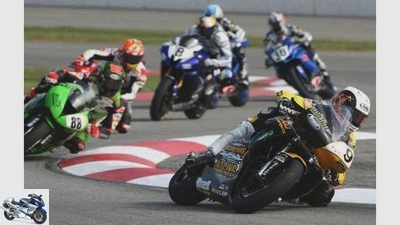
Buell
29/55
2009 – AMA Pro Daytona SportBike winner: Danny Eslick.
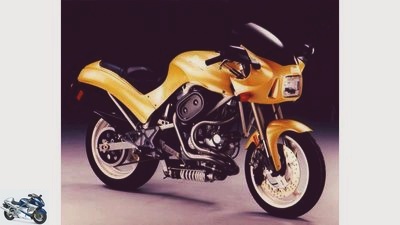
Buell
30/55
1994 – S2 Thunderbolt is the first motorcycle that results from the now closer cooperation with the Motor Company.
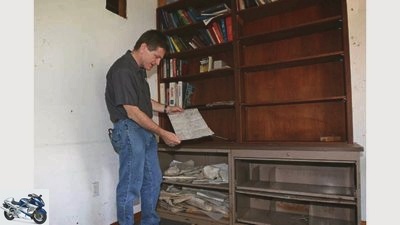
Buell
31/55
Erik in the shed with an old construction plan of brake discs.
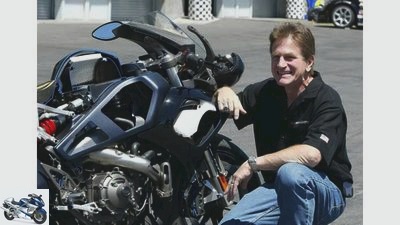
Buell
32/55
Erik Buell at the presentation of the 1125R – here the Buell in a cutaway model.

Buell
33/55
On the day of the anniversary, some Buells are gathered in front of the plant.
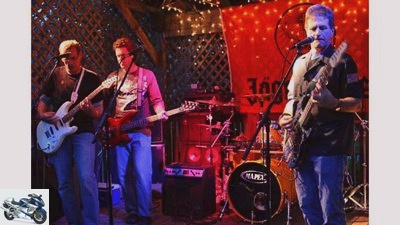
Buell
34/55
Erik with his band Thunderbolts in Elkhart Lake.
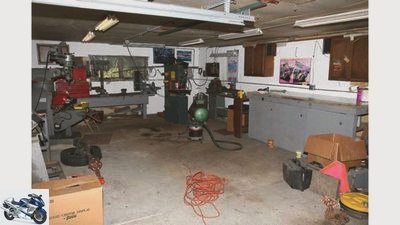
Buell
35/55
The historical production facility from the inside.
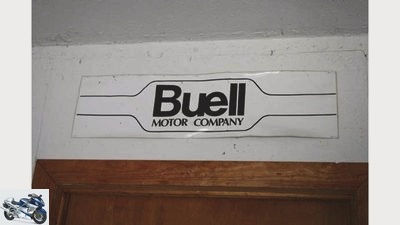
Buell
36/55
Erik couldn’t find the right motorcycle for himself at the time …
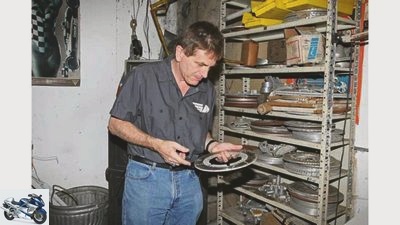
Buell
37/55
The associated hardware is still in the old Buell Motor Company garage.
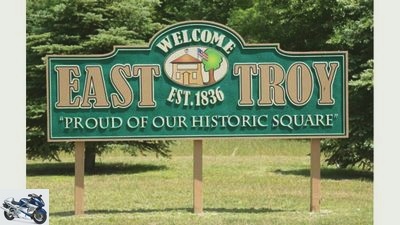
Buell
38/55
2008 – 25th Anniversary in East Troy.
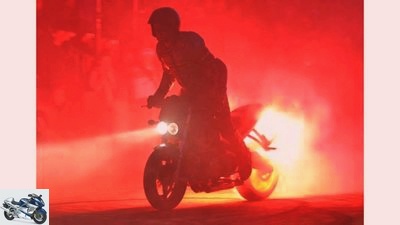
Buell
39/55
2007 – Rainer Schwarz shows what he can do on an XB12S in Mainz.
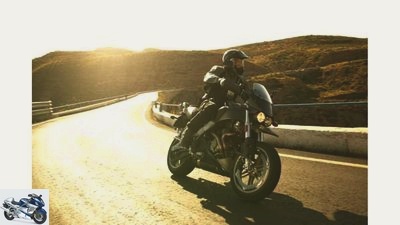
Buell
40/55
2006 – The Adventure Sports Bike Ulysses XB12X …
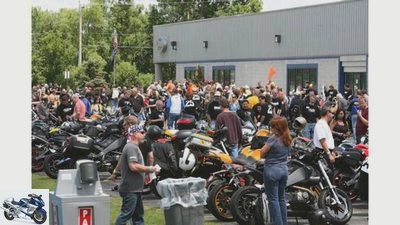
Buell
41/55
Buell fans celebrate around the factory.
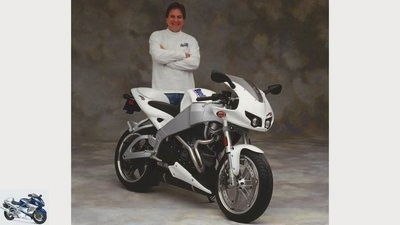
Buell
42/55
Erik Buell and the Firebolt XB9R, their basic chassis data correspond to those of a GP racer.

Buell
43/55
… the new Streetfighter Lightning XB12S.
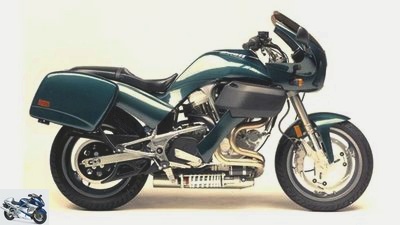
Buell
44/55
In addition, the sports tourer S3 Thunderbolt comes onto the market, which is now also represented for Buell in Germany and Austria.
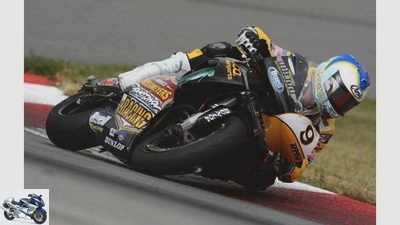
Buell
45/55
Two-wheelers also continued to accelerate: Danny Eslick, US champion at the AMA Daytona SportBike.
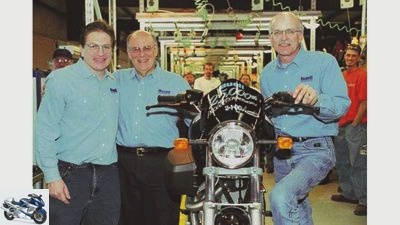
Buell
46/55
On January 2, 2000, the 25,000th Buell leaves the assembly line.
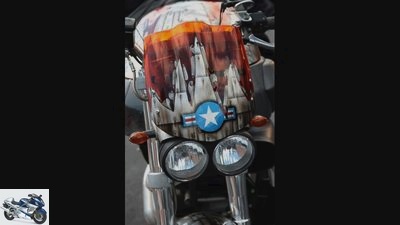
Buell
47/55
On the company’s 25th anniversary: an unusual look discovered on a Buell bike in front of the factory.
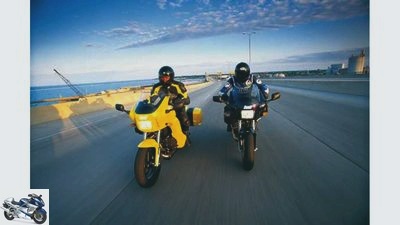
Buell
48/55
The Thunderbolt S3T and S3 on exit 1999.
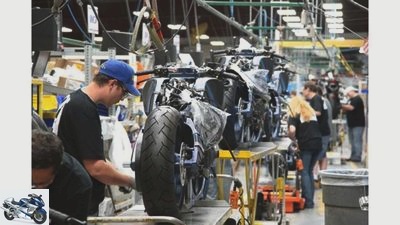
Buell
49/55
Around 180 employees now work for the Buell Motorcycle Company in East Troy. They produce more than 11,000 machines a year.
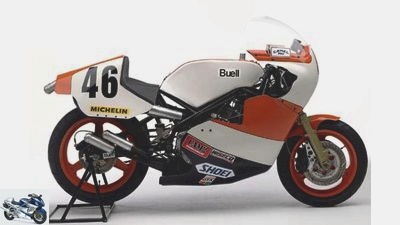
Buell
50/55
The history of Buell motorcycles begins in 1983: the RW750 racing machine with a square four two-stroke engine is about to be ready for production – and becomes superfluous because the American motorsport association AMA decides to discontinue the Formula One class in favor of the superbikes. Only one copy was sold.

Buell
51/55
The Firebolt XB12R has a 1203 cm³ large, air-cooled and long-stroke designed V-Twin, just like …
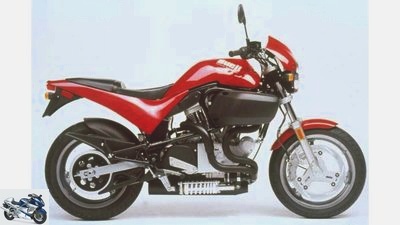
Buell
52/55
In 1997 Buell made its debut with the M2 Cyclone in the all-rounder category: fast and extraordinary.
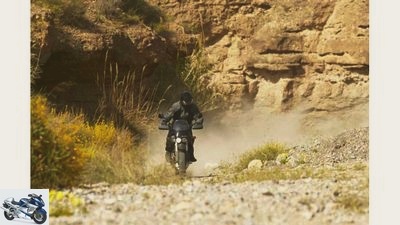
Buell
53/55
… shines with optimal touring suitability.
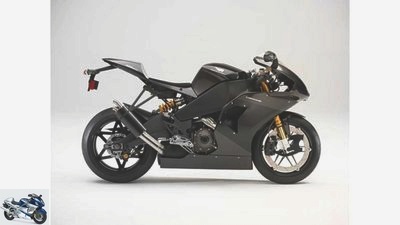
Buell
54/55
With the EBR 1190 RS, Erik Buell presented a new super sports car in 2011 that has a Rotax V2 engine at its heart and was launched in 2012.
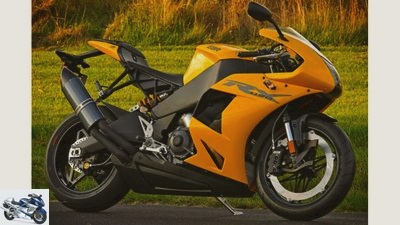
Buell
55/55
Sports & scene
Scene: Review: 26 years of Buell – Erik Buell remembers
Scene: Review: 26 years of Buell – Erik Buell remembers
“I wanted to build Harleys with handling”
Shortly before the unexpectedly announced Harley-Off for his work, Erik Buell had told the mad reporter Alan Cathcart about his beginnings: Buell about Buell.
Klaus Herder
December 3, 2009
It’s not just his technical solutions that are unconventional, Erik Buell himself has been swimming against the current all his life. On a farm in the US state of Pennsylvania, where the now 59-year-old grew up, he had tuned a 110 Honda with step-through as an eleven-year-old boy: Little Erik wanted more power and, above all, better handling when he chugged out into the fields with it . He later got hired as a mechanic in a motorcycle shop, the money was supposed to finance a degree in mechanical engineering at the University of Pittsburgh. At the same time, he had started as a mechanic for a hobby racing driver, who suddenly quit in the middle of the season and rewarded Erik for his services with the racing machine: a Kawasaki Big Horn 350 single-cylinder. “So I started local races myself in 1972 and 1973”, Erik Buell remembers with a grin the foundations of his later career as a racing driver, designer and finally company founder.
In 1978, at the age of 28, he made it into the 750cc class in the national championship of the American Motorcycle Association (AMA). “In qualifying for the Daytona 200, I was the fastest rookie, 17th of 80 drivers”, he still proudly tells today. “I stood in front of Randy Mamola on the grid and thought I was dreaming. In the race itself I was in the top ten when the ignition burned out. And in the Superbike race, in which I started with a Ducati 900 SS, I was in sixth place shortly before the end. Then one of the carburetors fell off. That was nothing special at Ducatis at the time. Nevertheless, I achieved a number of good results in the years up to 1982, then graduated from university with an engineering degree and started at Harley in development. At that time I decided that it was somehow not right to ride with the material of our competitors. But after a few races with a RR 250 two-stroke Harley, which firstly I was too big for and secondly was not competitive anyway, I bought a 750-cc, a two-stroke with a rotary valve inlet, and am the one AMA championship driven. The part was really fast, but extremely sensitive and had the handling of a truck. So I built my own frame and equipped the engine with my own crankshafts, cylinders and pistons. The result was 163 hp at 10500 rpm, a hell of a lot for the time. And then I thought that there had to be a market for it. So I took out a mortgage on my house and started the Buell Motorcycle Company to start mass production.”
Erik Buell was previously employed at Harley in the research and development department from 1979 to 1984, most recently under the later Harley boss Jeff Bleustein, who was Vice President Engineering at the time. After the shift in the office, Erik came home just to continue working on his two-stroke RW 750 in the evening. “The stupid thing was that it was precisely at this time that the AMA abolished the 750cc class in favor of the superbikes. So we were able to sell exactly one copy of the RW 750 – financially a catastrophe, I was completely broke. The RW prototype stood in my shed forever, covered in dust and pigeon feathers, until a couple of guys from the factory restored it for me years later.” Finally, the 750 shone like new in Erik’s office.
“At Harley, I started at the bottom of the engine totem pole. I had to count the oil cans that were used to fill each engine on the assembly line. And in the days of the AMF Harleys and pre-Evo cast iron engines, there were still quite a few. But soon I got into chassis development. That was more my thing. At the bottom of my heart, I’ve always been a pipe bender. The idea of using a Harley engine in a racing machine came up like this: I had my own chassis with the RW 750, but the engine still got stuck too often. That happened again, so I borrowed a Harley XR 1000 Flattracker from a friend and took it to the start in Elkhart Lake. The engine was tuned, but the frame was standard and I still finished third against some Ducatis. This proved that the Harley engine had potential, but needed a reasonable frame to keep the power in check. But in those days some good friends of mine died in racing accidents, and my daughter was born at the same time. So it was time for me to stop racing and concentrate on building handling Harleys in my own company.” That was in 1984. But due to the financial disaster with the unsaleable RW 750, this remained wishful thinking for the time being.
In 1986 Erik Buell was finally commissioned to build a show motorcycle with an XR 1000 engine for a custom shop. It was the birth of the RR 1000 Battle Twin (p. 95), which was planned as a single piece. “But the reactions to it convinced me to build more. All handcrafted in my barn. It was difficult, especially without money. But I actually got 25 orders from dealers who wanted such a sports motorcycle, and Vaughn Beals, the then Harley boss after the management buy-out (July 1981, ed.), Agreed to buy a few of the XR 1000 -Ironhead four-speed twins contribute. So we started to produce in 1987. The 25 orders eventually turned into 50, but then suddenly there were no more Ironhead engines in stock.
However, Harley decided that I could also have the new 1200 Evo Sportster engines made of aluminum, with which we built around 70 bikes from 1988 to 1990. All single-seater with full paneling, which we also made completely ourselves for quality reasons. In 1990 the two-seater RS 1200 came out and it sold really well. We built 150 bikes that year alone. But then Harley introduced the five-speed gearbox and changed every single suspension point, which meant a complete re-planning.” After all, Buell had sold over 200 of the RS 1200 with a rubber-mounted motor, including a mono shock absorber and a single-disc brake. “It was the right direction.” The success of Buell’s completely underfunded private company ultimately convinced his former boss, Jeff Bleustein, who had meanwhile risen to head the Harley Company. Bleustein let Harley get a 49 percent stake in Buell, enabling his former employee to build the factory in East Troy, Wisconsin, not far from Milwaukee.
26 years and around 135,000 motorcycles later, on December 18, 2009, to be more precise, Bleustein’s successor in the office of Chief Executive Officer, Harley boss Keith Wandell, has now closed the same plant: the factory of the man who, according to his fans, is wrote the word handling in the Harley manual in the first place. Erik Buell says of himself that he has walked a rocky road, but always got further. But this new stone might be too big even for the pipe bender from East Troy.
What is Buell doing now?
These pages were finished long before the news came from the USA: Erik Buell is leaving the Harley Group on November 30th, 2009 in order to start building racing motorcycles and adding racing parts on a small scale to develop. with “Erik Buell Racing” The 59-year-old also wants to offer technical support to racing athletes on Buell motorcycles in the future. More on this: page 6.
Related articles
-
Anniversary: 25 years of Buell
Fact 31 pictures Buell 1/31 Buell trackday on the Wachauring (April 20, 2008) Buell 2/31 Buell trackday on the Wachauring (April 20, 2008) Buell 3/31…
-
New super sports cars from BMW, Buell and Aprilia
Drawing; power counselor technology & future New super sports cars from BMW, Buell and Aprilia New super sports cars from BMW, Buell and Aprilia Project…
-
The best stories from 25 years of MOTORRAD Classic
archive Sports & scene The best stories from 25 years of MOTORRAD Classic 25 years of MOTORRAD Classic A quarter of a century MOTORRAD Classic Content of…
-
counselor workshop 75 years of Moto Guzzi 75 years of Moto Guzzi The emperor’s new eagle 30,000 Moto Guzzi fans witnessed the rebirth of a motorcycle…
-
Buell 55 pictures Buell 1/55 Erik Buell and the Rotax team at the Rotax plant. Buell 2/55 2003 – Stuntman Craig Jones on an XB9S. Buell 3/55 The Buell…
-
50 years of Kawasaki motorcycles
archive 10 pictures archive 1/10 1991 Kawasaki Zephyr The alternative to higher-faster-further: The naked bike with air-cooled four-cylinder took up…
-
Bilski counselor traffic & business Out for Buell EWC EWC / Buell It’s over – for real now? It is well known that the dead live the longest, but now the…
-
fact motorcycles 20 years of Honda VFR 20 years of Honda VFR Formula V The powerful, growling V4 engine, the soul of every VFR, has kept the Honda fan…
-
What moved the MOTORRAD editorial team in 111 years
archive Sports & scene What moved the MOTORRAD editorial team in 111 years What moved the MOTORRAD editorial team in 111 years You know what …? There…
-
Gargolov Sports & scene Life: Annual Review 2013 Annual review That was 2013 BMW celebrated its 90th anniversary, MOTORRAD turned 110! But there was also…